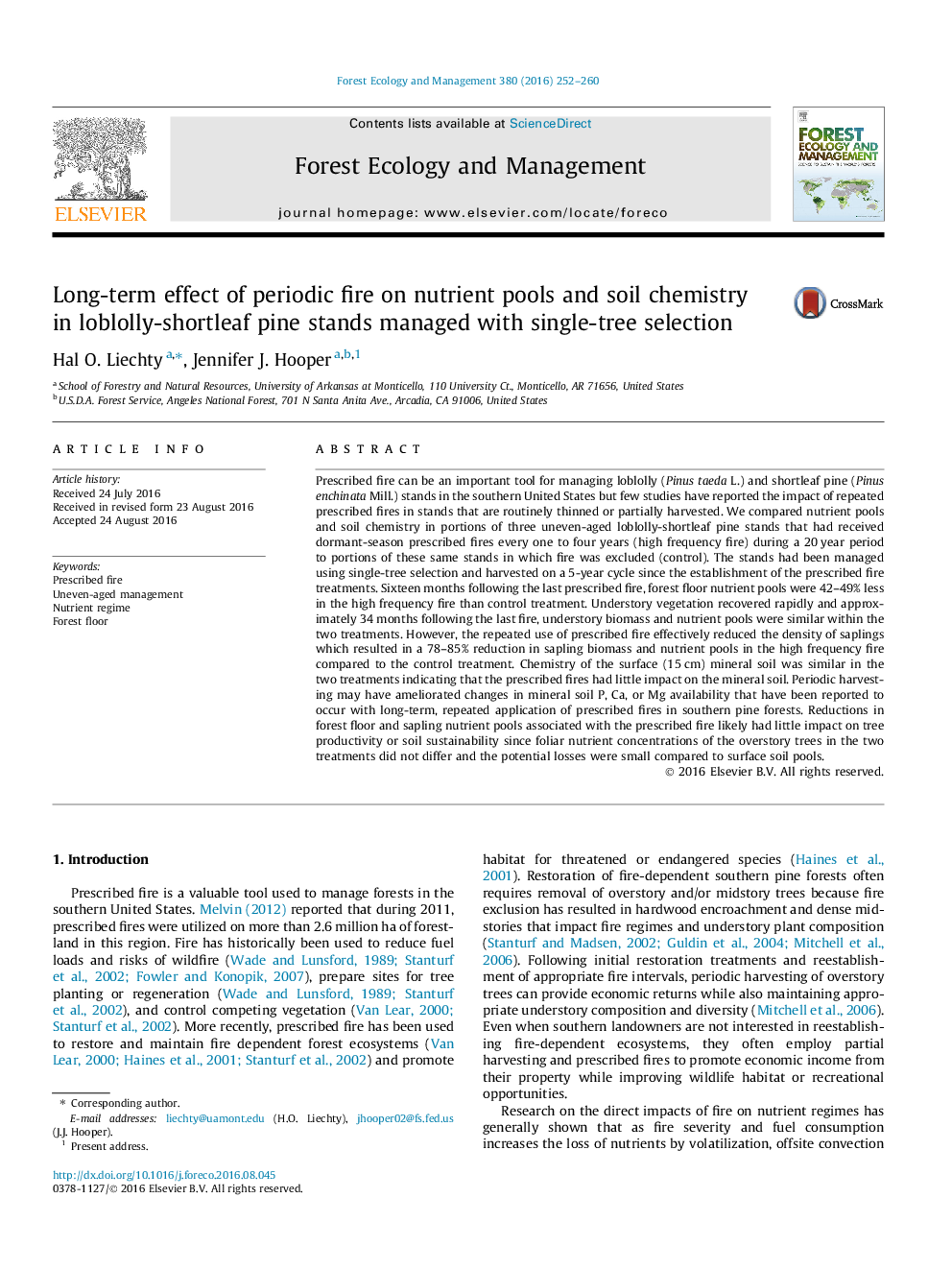| Article ID | Journal | Published Year | Pages | File Type |
|---|---|---|---|---|
| 4759680 | Forest Ecology and Management | 2016 | 9 Pages |
Abstract
Prescribed fire can be an important tool for managing loblolly (Pinus taeda L.) and shortleaf pine (Pinus enchinata Mill.) stands in the southern United States but few studies have reported the impact of repeated prescribed fires in stands that are routinely thinned or partially harvested. We compared nutrient pools and soil chemistry in portions of three uneven-aged loblolly-shortleaf pine stands that had received dormant-season prescribed fires every one to four years (high frequency fire) during a 20Â year period to portions of these same stands in which fire was excluded (control). The stands had been managed using single-tree selection and harvested on a 5-year cycle since the establishment of the prescribed fire treatments. Sixteen months following the last prescribed fire, forest floor nutrient pools were 42-49% less in the high frequency fire than control treatment. Understory vegetation recovered rapidly and approximately 34Â months following the last fire, understory biomass and nutrient pools were similar within the two treatments. However, the repeated use of prescribed fire effectively reduced the density of saplings which resulted in a 78-85% reduction in sapling biomass and nutrient pools in the high frequency fire compared to the control treatment. Chemistry of the surface (15Â cm) mineral soil was similar in the two treatments indicating that the prescribed fires had little impact on the mineral soil. Periodic harvesting may have ameliorated changes in mineral soil P, Ca, or Mg availability that have been reported to occur with long-term, repeated application of prescribed fires in southern pine forests. Reductions in forest floor and sapling nutrient pools associated with the prescribed fire likely had little impact on tree productivity or soil sustainability since foliar nutrient concentrations of the overstory trees in the two treatments did not differ and the potential losses were small compared to surface soil pools.
Related Topics
Life Sciences
Agricultural and Biological Sciences
Ecology, Evolution, Behavior and Systematics
Authors
Hal O. Liechty, Jennifer J. Hooper,
